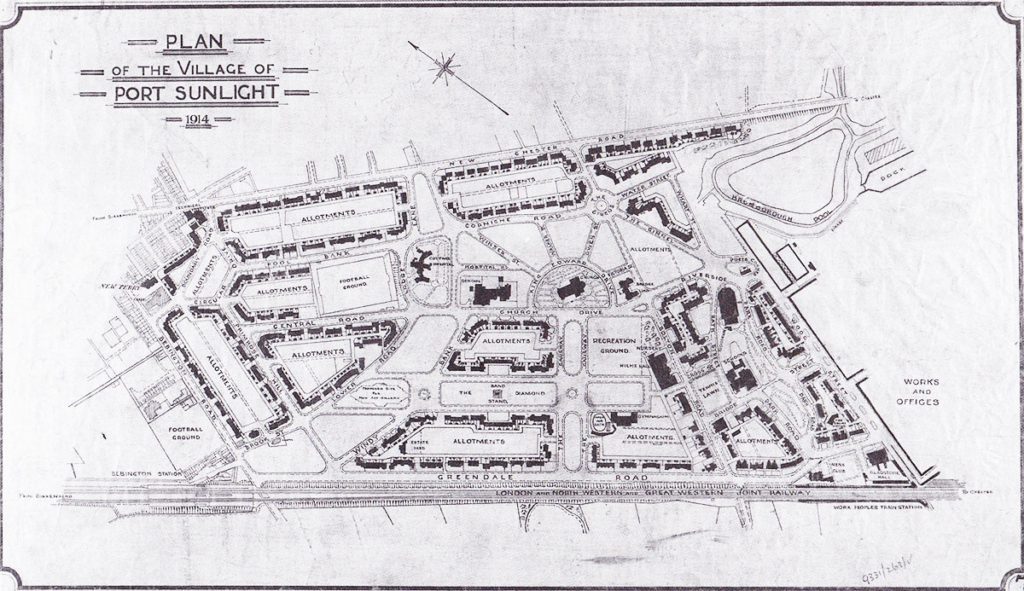A brief history of Port Sunlight
Port Sunlight is arguably the finest surviving example of early urban planning in the UK, and has remained largely intact since its foundation by William Hesketh Lever in 1888.
The village is home to more than 900 Grade II listed buildings set in 130 acres of parkland and gardens. More than 30 different architects created the buildings, monuments and memorials we still see today, and nearly every period of British architecture is represented through revival design. The village is a good example of the aesthetic movement, which emphasised visual and sensual qualities of art and design, and the Arts and Crafts Movement, with its emphasis on traditional craftsmanship.
Lever built Port Sunlight to house the workers at his soap factory, Lever Brothers, which eventually became the global giant, Unilever. The village represents one man’s vision to provide industrial workers with decent, sanitary housing in a considered architectural and picturesque form.
However, rather than a philanthropic venture, Lever claimed it was all part of a business model he termed ‘prosperity-sharing’. Rather than sharing the profits of the company directly with his employees, Lever provided them with decent and affordable houses, amenities and welfare provisions that made their lives secure and comfortable and enabled them to flourish as people. It was also intended to inspire loyalty and commitment.
Port Sunlight was by no means the first model industrial village, Robert Owen’s New Lanark on the River Clyde in Scotland was developed from 1800, and Sir Titus Salt’s village of Saltaire from 1851. But at Port Sunlight, these ideas combined with provision of green spaces, parkland, and public buildings and were the key influence on the Garden City Movement.
Although workers in Port Sunlight benefited from improved living conditions, we know that others elsewhere in the world didn’t. From the turn of the twentieth century, in a bid to source ingredients for his soapmaking operations cheaply, William Lever began setting up plantations in places that included the Solomon Islands and the former Belgian Congo (for more information about Lever’s colonial dealings in Central Africa, read our research booklet Racism, the Belgian Congo, and William Lever).
Now, thanks to the impact of international anti-racist movements confronting colonial legacies, evidence of enforced labour and racial violence at plantations like these is increasingly being brought to light. PSVT is currently undertaking a programme of research to openly explore the village’s own colonial links and help shape a truly inclusive local culture, as part of our anti-racist commitments to Equity, Diversity & Inclusion.
We don’t want you to miss a thing on your trip to Port Sunlight. The Port Sunlight Experience is the new way to discover Port Sunlight with one single ticket. This unique package allows you to explore the history of this special village at Port Sunlight Museum, get a feel for life in the village a century ago in the Edwardian Worker’s Cottage, and immerse yourself in the story of soap at the brand new and interactive SoapWorks.
If you’re interested in looking at some of the original architectural drawings of the village, a new project made possible by the Heritage Lottery Fund (HLF) called Drawn Together, allows you to look at over 4000 original plans and detail drawings in a new digital archive which can be found on drawntogether.portsunlightvillage.com


